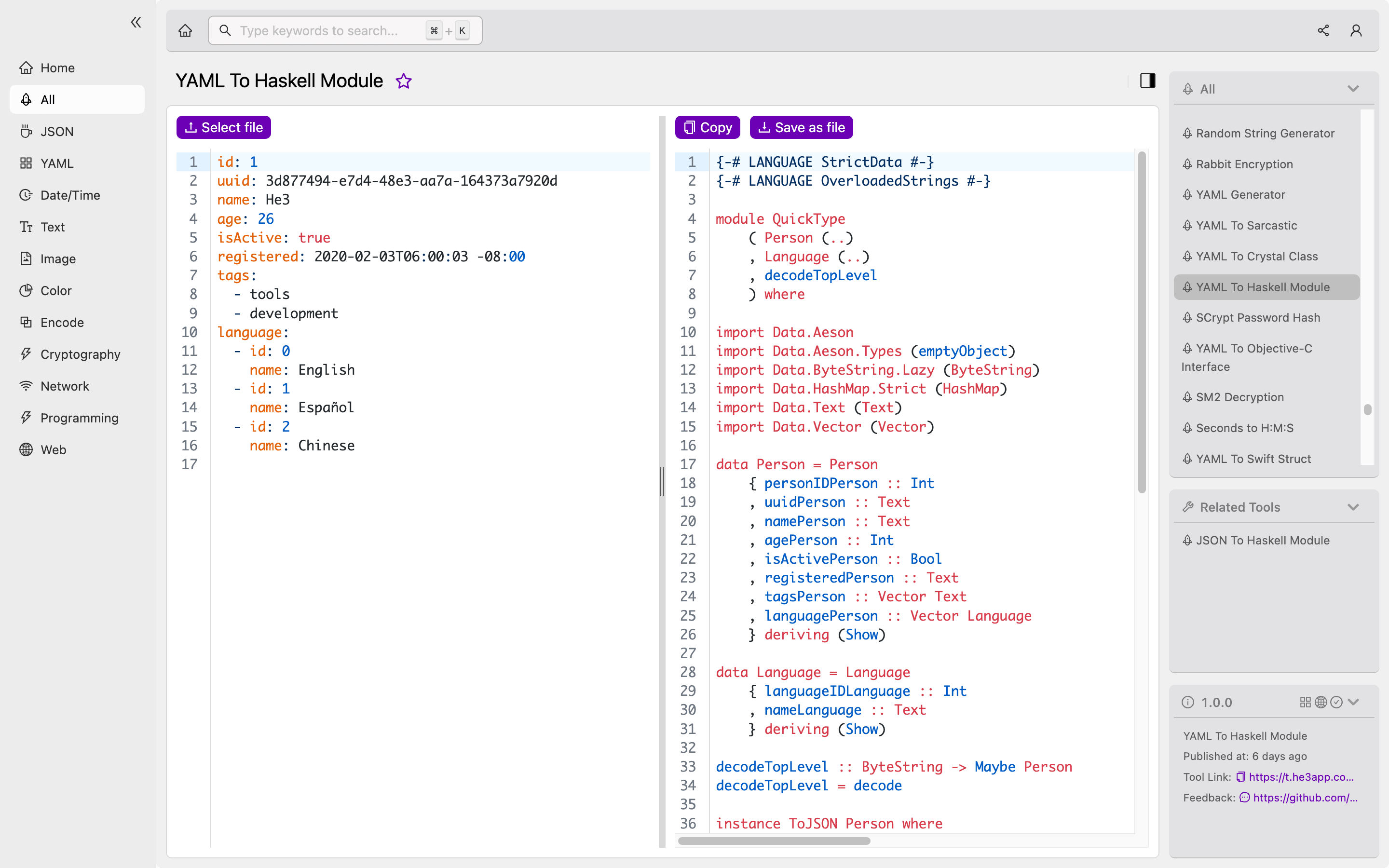Convert YAML to Haskell Module Easily with YAML To Haskell Module Tool
If you are a Haskell developer who works with YAML files, you may be interested in the YAML To Haskell Module tool. This tool allows you to easily parse YAML files and generate Haskell modules from them. In this article, we will explore the concept of YAML To Haskell Module and how it works. We will also provide some scenarios and common misconceptions about this tool.
How YAML To Haskell Module Works
YAML is a human-readable data serialization format that is commonly used for configuration files. Haskell, on the other hand, is a purely functional programming language. The YAML To Haskell Module tool bridges the gap between these two technologies by converting YAML files to Haskell modules.
The tool works by parsing the YAML file and generating Haskell data structures based on the content of the file. These data structures can then be used to generate Haskell code for a module. The resulting Haskell module can be imported and used in other Haskell programs.
As an example, consider the following YAML file:
name: John Doe
age: 35
address:
street: 123 Main St
city: Anytown
state: NYThe tool can parse this file and generate the following Haskell module:
module Main where
data Address = Address
{ street :: String
, city :: String
, state :: String
} deriving (Show)
data Person = Person
{ name :: String
, age :: Int
, address :: Address
} deriving (Show)
main :: IO ()
main = do
let johnDoe = Person
{ name = "John Doe"
, age = 35
, address = Address
{ street = "123 Main St"
, city = "Anytown"
, state = "NY"
}
}
print johnDoeScenarios for Developers
YAML To Haskell Module can be useful in various scenarios for Haskell developers. Here are some examples:
- Configuration files: If your Haskell program uses configuration files in YAML format, you can use this tool to easily parse them and generate Haskell modules that represent the configurations.
- Data serialization: If you need to serialize data to YAML format and then deserialize it back into Haskell data structures, you can use this tool to generate the necessary Haskell code.
- Testing: If you need to generate test data for your Haskell program, you can use this tool to quickly create YAML files and generate corresponding Haskell modules.
Key Features of YAML To Haskell Module
Here are some key features of YAML To Haskell Module:
| Feature | Description |
|---|---|
| Easy to use | The tool is easy to use and requires minimal configuration. |
| Customizable | You can customize the generated Haskell code by providing your own Haskell data types. |
| Streamlined workflow | The tool streamlines your workflow by eliminating the need to manually write Haskell code for parsing YAML files. |
Common Misconceptions and FAQs
Misconception: YAML To Haskell Module only works with simple YAML files.
While it is true that the tool works best with simple YAML files, it can handle more complex files as well. You can customize the generated Haskell code to handle more complex data structures.
FAQ: Can I use YAML To Haskell Module with He3 Toolbox?
Yes, you can use the YAML To Haskell Module tool in He3 Toolbox (https://t.he3app.com?ythv) easily.
FAQ: Can I customize the generated Haskell module?
Yes, you can customize the generated Haskell module by providing your own Haskell data types.
In conclusion, YAML To Haskell Module is a useful tool for Haskell developers who work with YAML files. It streamlines the process of parsing YAML files and generating corresponding Haskell modules. If you work with YAML files in your Haskell programs, give this tool a try.

